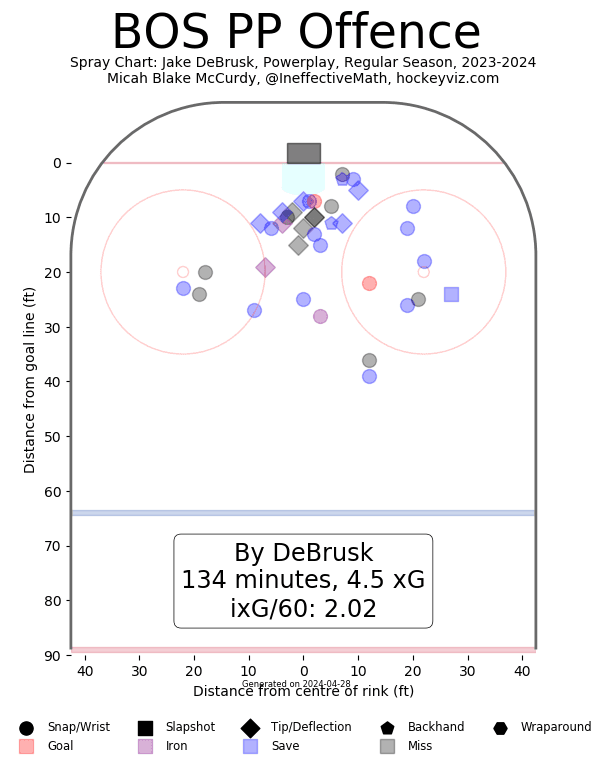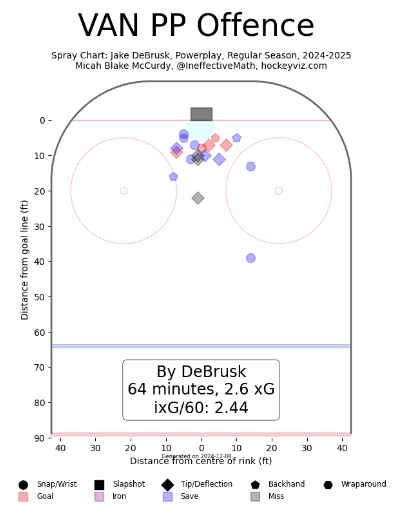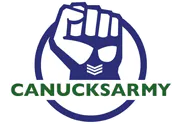Nation Sites
The Nation Network
CanucksArmy has no direct affiliation to the Vancouver Canucks, Canucks Sports & Entertainment, NHL, or NHLPA
Why the Canucks’ power play improved without JT Miller, and what it means for his return

Photo credit: © Winslow Townson-Imagn Images
By Tyson Cole
Dec 9, 2024, 18:49 ESTUpdated: Dec 9, 2024, 19:03 EST
The Vancouver Canucks have a decision to make regarding their power play. And it might not be as easy as we thought.
The Canucks power play has been firing lately, which is surprising only because teams’ power plays don’t typically improve when their leading scoring forward is out of the lineup. But that’s exactly what has happened since JT Miller took his leave of absence on November 21.
And no. This isn’t to say the Canucks’ power play long-term is better without Miller. He’s a very valued member of that power play, and he often has the puck on his stick for most of the offensive zone time. However, the configuration of Elias Pettersson, Brock Boeser, Conor Garland, Jake DeBrusk, and Quinn Hughes have all been clicking in his absence.
In the nine games without Miller, they are converting at a 25% clip (7/28) and have gone without a power play goal in just three of those nine games. Hughes, of course, leads the five in power play points with six (1G+5A), followed by DeBrusk with five (5G), Garland with four (1G+3A), Boeser with three (3A) and Pettersson with two (2A).
So, what is the reason for this massive improvement?
Well, let’s look at what has changed.
With Boeser still sidelined and before Miller took his leave, the team had Hughes at the point, Miller and Garland on the half-walls with Pettersson in front and Pius Suter in Boeser’s spot in the bumper. Once Miller was out of the lineup and Boeser returned, Hughes remained at the point, Garland and Pettersson on the half-wall, with Boeser back in his bumper spot but with DeBrusk at the net front.
This is close to how they started the season but with Miller in Garland’s spot. But once Garland got off to his hot start (seven points in seven games), and DeBrusk still finding his footing on a new team and struggling with just one point on the power play, they made the swap. This shifted a snake-bitten Pettersson to man the net-front instead of utilizing his heavy one-time option on the half-wall. It did work, but it isn’t sustainable to play him out of a half-wall position if they want to keep the power play at its more dangerous with his shot as an option.
Now, with DeBrusk at the net-front, the Canucks now have everybody in their preferred position on the power play: Hughes at the point, Garland as a puck-dominant player on the half-wall, Pettersson as the threatening one-time option as well as a distributor, Boeser in the bumper to utilize his shot and quick release, and DeBrusk at the net-front to screen the goalie and who has the hand-eye coordination to tip point shots, and swift hands to tap home the rebound.
DeBrusk’s five goals on the power play throughout Miller’s absence should speak volumes as to why this power play has clicked so well. Here are all five of DeBrusk’s power play goals:
While screening the goalie, DeBrusk tips in the half-wall shot from Garland.
DeBrusk parked in front of the net for the Hughes shot. He switches his positioning to turn his back to the Bruins defender and has a wide-open net to tap in because of it.
There was lots of extra room on this ice during a 5-on-3, but he again boxes out the defender net-front and tips home the Pettersson shot-pass through the five-hole of the Red Wings goaltender.
Just settling in coming off the rush, DeBrusk immediately goes to the front of the net. There, he’s ready with his quick hands to pull the Hughes rebound into a shooting position and scores.
Another play here, where he heads straight to the net and is quickly able to sneak the Hughes rebound through the five-hole.
Notice all five of DeBrusk’s goals came at the net-front.
But his net-front goal-scoring ability stems further than just on the power play:
He heads straight to the net, using his body as leverage to gain positioning where he will be the first player to grab the rebound. That’s exactly what happens, and DeBrusk uses his quick hands to light the lamp.
He can do more than tip and use quick hands at the net front; he can also get incredible elevation on his shot from in tight.
And his success shouldn’t come as a surprise. It’s a position that DeBrusk has performed well in and is comfortable in. He was in that role during his time in Boston.
Looking at his shot map from last season and this season on HockeyViz, we can see where DeBrusk got most of his shots last season on the power play.
*charts provided by HockeyViz.com

Now, flip that to his time in Vancouver thus far; it lines up well with how

Now that we’ve established DeBrusk at the net front has been one of the main reasons for the Canucks’ power play success, it begs the question:
Who gets taken off the top unit when Miller is back?
While the current configuration of the power play is clicking, and you don’t necessarily want to mess with a good thing, it doesn’t make much sense not to insert Miller back on the top unit once he’s ready to return.
So, who’s irreplaceable?
Hughes at the point is necessary, Pettersson on the half-wall for his one-time option, Boeser in the bumper for his quick release, and DeBrusk at the net-front.
In that case, it has to be Garland, right?
Don’t get it wrong; Garland is a great facilitator on the power play. But his role on the power play is very similar to Miller’s. Garland’s long been the one to run the second unit as he’s a puck-dominant distributor.
To maximize Garland’s ability, he does most of his damage along the half-wall rather than down low at the goal line – which is where he’s been playing when the top unit was at full health. Allowing him to run his own unit would only help secondary power play scoring and allow DeBrusk to keep causing chaos in front of the goalie on the top unit.
Let’s not forget; the net-front ability was one of the reasons the Canucks brought DeBrusk in this offseason. Here’s what Canucks General Manager Patrik Allvin said about the DeBrusk signing on July 1:
“Yeah, the powerplay is something we need to improve on. He [DeBrusk] definitely fits in. He played mostly net-front in Boston, so I think this gives the coaching staff more options.”
It seems foolish to take DeBrusk off the top power play when Miller returns, considering he brings an element to that unit that nobody else has, and he’s producing. We’ll see what the team decides to do with the power play once Miller makes his return. The team is hopeful he will return to Canucks practice on Wednesday and return shortly thereafter.
What do you think, Canucks fans? Who do you want to see on the team’s top power play unit once he returns? Let us know in the comment section below!
Sponsored by bet365
Breaking News
- The Statsies: A big game from Aatu Räty helps Canucks overcome Wild
- Wagner’s Weekly: Is Canucks’ Jim Rutherford pulling off a stealth tank?
- Canucks assign Jonathan Lekkerimäki to AHL Abbotsford
- The Stanchies: Youth carries Canucks in weekend win vs. Wild
- Instant Reaction: Räty scores a pair, Willander pots first NHL goal in Canucks’ 4-2 win over Wild
